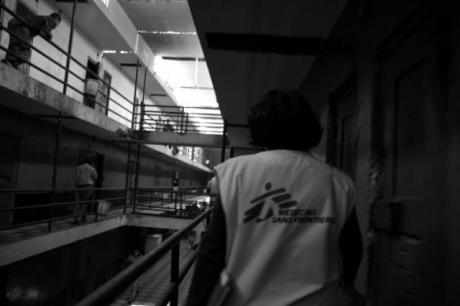South American Jails are not known for their luxury and Peru is no exception. Read on for facts & information about the Peruvian prison system and Prison conditions in Peru…
Understanding Peruvian law without knowing how to read Spanish is a very difficult task and you will find little help in this matter. However, we can offer a general idea of how the system works and the conditions of prisons in Peru.
The Peruvian Penal system
The judicial system uses the Napoleonic code as its base. A case is investigated by a prosecutor and gives an opinion to the first instance judge. This judge then makes a decision as to whether there is enough legal evidence to start legal proceedings. The job of the judge is to investigate and make an evaluation of the facts available. Then it is determined whether the person in question is innocent or guilty and then a sentence is issued.
Defendants are given rights to attend trials, call witnesses and to represent themselves by a counsel. They are presumed innocent until found guilty. Indigent people are given access to attorneys free of cost but it has been reported that these attorneys are poorly trained. Even though people are allowed to be tried in their own language, language services are unavailable to them most of the times. Defendants have the power to make an appeal to a superior court against the verdict given and then appeal to the Supreme Court later on.
When looking at the police system, the police are allowed to detain people for investigation. Open arrests are common. A written warrant is required to make an arrest but a person can be apprehended instantly if caught red handed. Arrested persons need to be brought before a court within 24 hours. If the person has been apprehended for crimes such as terrorism or drug trafficking, they need to be brought to court within 30 days.
Prison conditions
Prison conditions in Peru are known to be very poor and of very low standards. Let’s take an example of one prison in Peru, the Larri Ganchos to understand the situation in a better manner. The prison was built to hold around 3000 captives but is overcrowded with 10000 people now. There are very few guards and the lack of funds does not allow more guards to be hired. Guards are only present outside the prison and in safe areas.
The security inside the prison is maintained by the inmates who are sanctioned by the administration. There is discord within the prison on a regular basis with attacks, rapes and beatings being common almost every single day. Water is provided only twice a day to the inmates, which is barely enough. Some inmates are treated as outcasts if they commit offenses within the prison and are not given food or shelter. In times like these they look into garbage cans for food and reside in the grounds. Drugs are common in the prison and there are wild dogs in the premises as well.
This description of one prison in Peru gives us a general idea of what other prisons are bound to be like; worse, if not slightly better.





